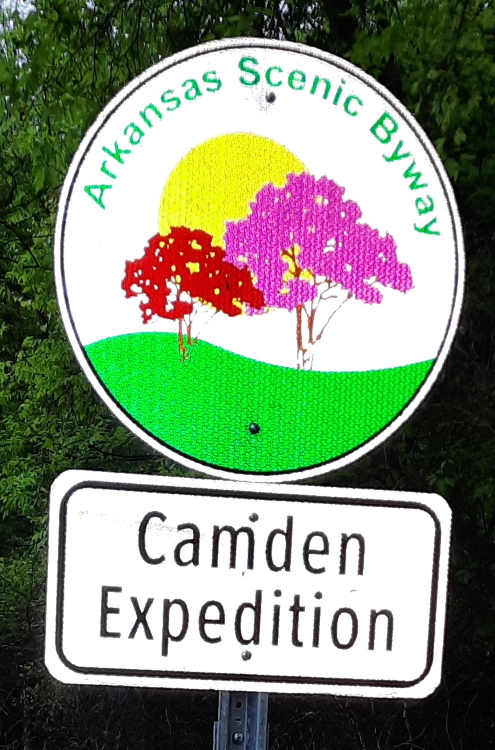Summary
April 13,1864. Confederate cavalry under Brig. Gen. Thomas Dockery attacked Steele's rearguard at Moscow as Steele moved toward Camden. Thayer's Union forces managed to repel the Confederate attackers and then rushed to join Steele on the road to Camden.
The Route
▷ We previously began at Washington, ending on Arkansas 24 at Cale Road/Ash Street in Prescott, which is our starting point.
▷ Ark 24/S Main St at Ash Street/Cale Road, Prescott ARTurning right onto Ash Street then immediately go straight (southeastward) onto Cale Road / Nevada 23 and travel southeastward and southerly 1.5 miles to the Moscow Church and Cemetery.
▷ Moscow Church and Cemetery, Nevada County ARMarkers interpret the final fighting at Prairie D'Ane. Use Cale Road/Nevada 23 to return 1.5 miles to Arkansas 24.
▷ This brings us ready to proceed to the next point of interest, Bluff City.
Google Maps
Show my location on map
At the popup, you must allow your web brower (not us) to know your location.
Your location should update every 5 seconds.
This brings us ready to proceed to the next point of interest, Bluff City.
Moscow in the Camden Expedition
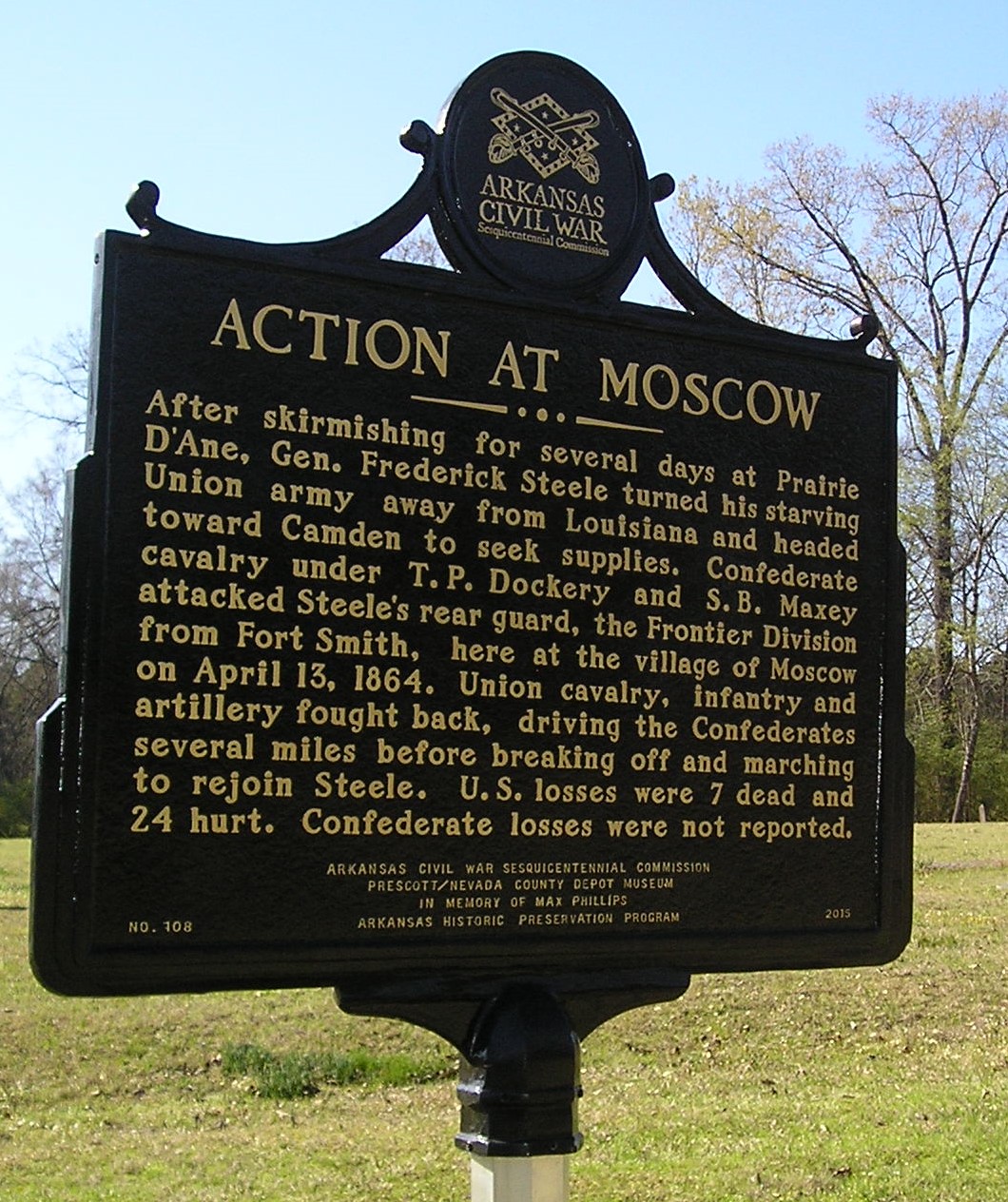
Marker at Moscow Church interprets the final fighting at Prairie D'Ane.
After skirmishing for several days at Prairie D'Ane, Gen. Frederick Steele turned his starving Union army away from Louisiana and headed toward Camden to seek supplies. Confederate cavalry under T. P. Dockery and S. B. Maxey attacked Steele's rearguard, the Frontier Division from Fort Smith, here at the village of Moscow on April 13, 1864. Union cavalry, infantry and artillery fought back, driving the Confederates several miles before breaking off and marching to rejoin Steele. U.S. losses were 7 dead and 24 hurt. Confederate losses were not reported.
Photo by Peggy Lloyd
History of Moscow
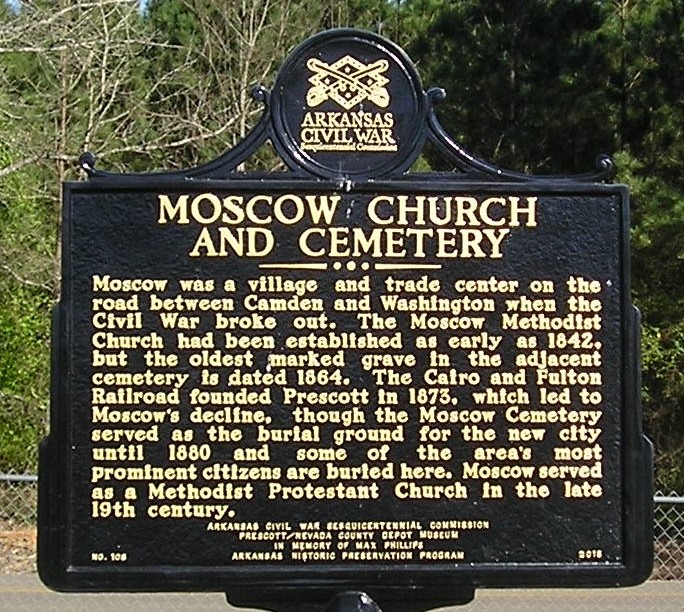
History of Moscow Church and Cemetery
Moscow was a village and trade center on the road between Camden and Washington when the Civil War broke out. The Moscow Methodist Church had been established as early as 1842, but the oldest marked grave in the adjacent cemetery is dated 1864. The Cairo and Fulton Railroad founded Prescott in 1873, which led to Moscow's decline, though the Moscow Cemetery served as the burial ground for the new city until 1880 and some of the area's most prominent citizens are buried here. Moscow served as a Methodist Protestant Church in the late 19th century.
Photo by Peggy Lloyd
Rear Guard Action at Moscow - Thunder on the Prairie
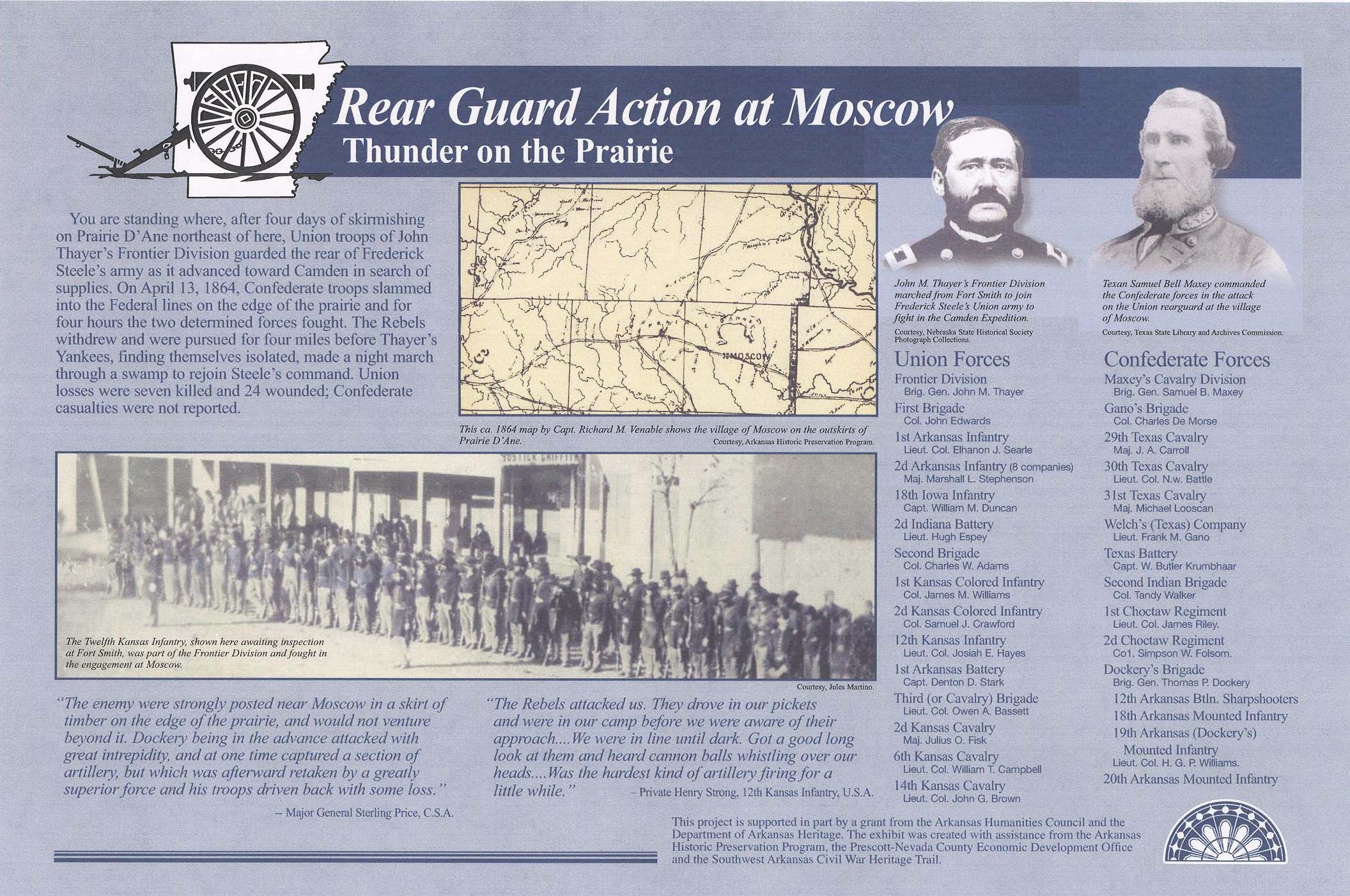
You are standing where, after four days of skirmishing on Prairie D'Ane northeast of here, Union troops of John Thayer's Frontier Division guarded the rear of Frederick Steele's army as it advanced toward Camden in search of supplies. On April 13, 1864, Confederate troops slammed into the Federal lines on the edge of the prairie and for four hours the two determined forces fought. The Rebels withdrew and were pursued for four miles before Thayer's Yankees, finding themselves isolated, made a night march through a swamp to rejoin Steele's command. Union losses were seven killed and 24 wounded; Confederate casualties were not reported.
"The enemy were strongly posted near Moscow in a skirt of timber on the edge of the prairie, and would not venture beyond it. Dockery being in the advance attacked with great intrepidity, and at one time captured a section of artillery, but which was afterward retaken by a greatly superior force and his troops driven back with some loss."
Major General Sterling Price, C.S.A.
"The Rebels attacked us. They drove in our pickets and were in our camp before we were aware of their approach... We were in line until dark. Got a good long look at them and heard cannon balls whistling over our heads... Was the hardest kind of artillery firing for a little while."
Private Henry Strong, 12th Kansas Infantry, U.S.A.
John M. Thayer's Frontier Division marched from Fort Smith to join Frederick Steele's Union army to fight in the Camden Expedition.
Union Forces
Frontier Division - Brig. Gen. John M. Thayer
First Brigade - Col. John Edwards
1st Arkansas Infantry - Lieut. Col. Elhanon J. Searle
2nd Arkansas Infantry (8 companies) - Maj. Marshall L. Stephenson
18th Iowa Infantry - Capt. William M. Duncan
2d Indiana Battery - Lieut. Hugh Espey
Second Brigade - Col. Charles W. Adams
1st Kansas Colored Infantry - Col. James M. Williams
2nd Kansas Colored Infantry - Col. Samuel J. Crawford
12th Kansas Infantry - Lieut. Col. Josiah E. Hayes
1st Arkansas Battery - Capt. Denton D. Shark
Third (or Cavalry) Brigade - Lieut. Col. Owen A. Bassett
2d Kansas Cavalry - Maj. Julius O. Frisk
6th Kansas Cavalry - Lieut. Col. William J. Campbell
14th Kansas Cavalry - Lieut. Col. John G. Brown
Texan Samuel Bell Maxey commanded the Confederate forces in the attack on the Union rearguard on the village of Moscow.
Confederate Forces
Maxey's Cavalry Division - Brig. Gen. Samuel B. Maxey
Gano's Brigade - Col. Charles De Morse
29th Texas Cavalry - Maj. J.A. Carroll
30th Texas Cavalry - Lieut. Col. N.W. Battle
31st Texas Cavalry - Maj. Michael Looscan
Welch's (Texas) Company - Lieut. Frank M. Gano
Texas Battery - Capt. W. Butler Krumbhaar
Second Indian Brigade - Col. Tandy Walker
1st Choctaw Regiment - Lieut. Col James Riley
2d Choctaw Regiment - Col. Simpson W. Folsom
Dockery's Brigade - Brig. Gen. Thomas P. Dockery
12th Arkansas Btln. Sharpshooters
18th Arkansas Mounted Infantry
19th Arkansas (Dockery's) Mounted Infantry - Lieut. Col. H.G.P. Williams. 20th Arkansas Mounted Infantry
Moscow Side View
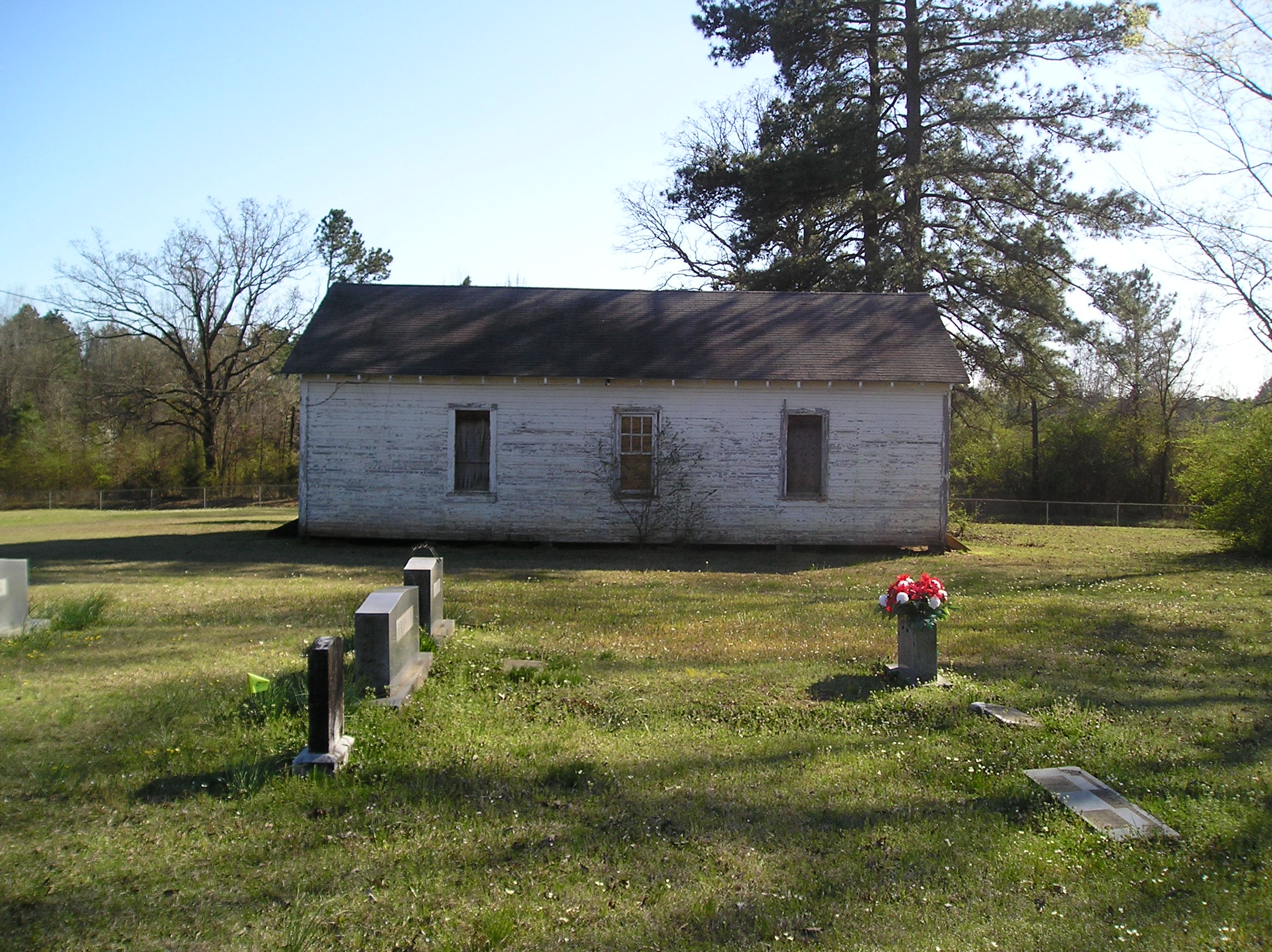
Moscow was a scattered village along the Camden to Washington stagecoach road at the time of the Civil War. With the coming of the Cairo and Fulton Railroad in 1873 and the founding of Prescott, business quickly rushed to the new railroad town nearby. The church and the cemetery are all that remain of Moscow.
Photo by Peggy Lloyd
Moscow
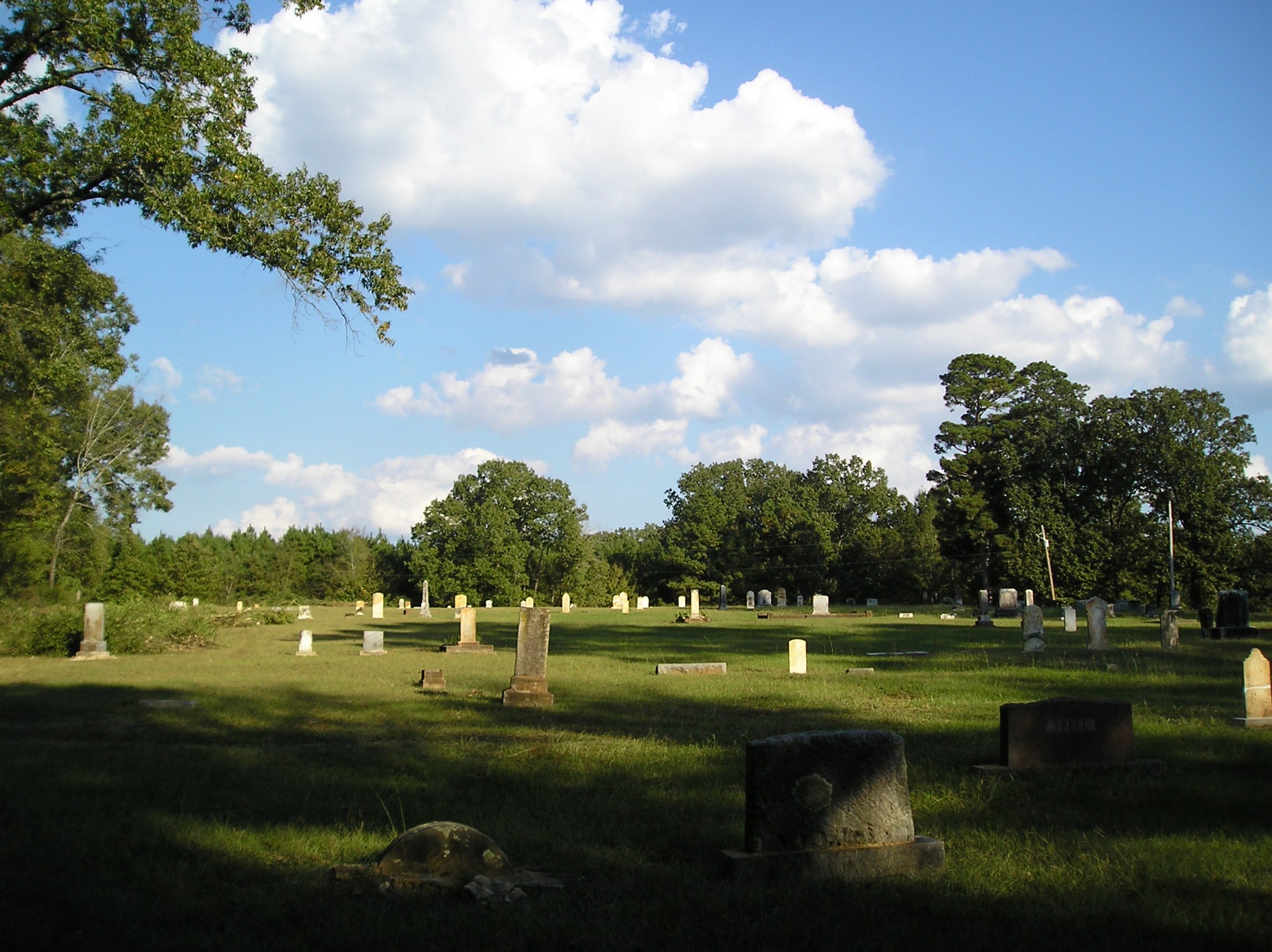
Until Prescott established DeAnn Cemetery in 1880, Moscow was also a burial ground for early citizens of Prescott. Founded well before the Civil War, Moscow Church was an active Methodist Church until 1989, and the cemetery still has an occasional burial. Moscow Church and Cemetery has been on the National Register of Historic Places since 2006. Choctaw Confederate troops under the command of Col. Tandy Walker participated in the fighting at Moscow. It is also a Choctaw historic site.
Photo by Peggy Lloyd
Up Next
This brings us ready to proceed to the next point of interest, Bluff City.
